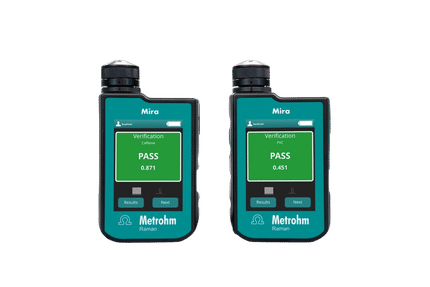| Proliferating cell nuclear antigen
|
|
|
| The assembled human DNA clamp, a trimer of the protein PCNA.
|
| Available structures: 1axc, 1u76, 1u7b, 1ul1, 1vyj, 1vym, 1w60
|
| Identifiers
|
| Symbol(s)
| PCNA; MGC8367
|
| External IDs
| OMIM: 176740 MGI: 97503 Homologene: 1945
|
| Gene Ontology
|
| Molecular Function:
| • DNA binding
• protein binding
• DNA polymerase processivity factor activity
• MutLalpha complex binding
|
| Cellular Component:
| • cyclin-dependent protein kinase holoenzyme complex
• nucleus
• nuclear lamina
• DNA replication factor C complex
• PCNA complex
|
| Biological Process:
| • regulation of progression through cell cycle
• DNA replication
• regulation of DNA replication
• DNA repair
• base-excision repair, gap-filling
• intracellular protein transport
• cell proliferation
• phosphoinositide-mediated signaling
|
|
| RNA expression pattern
|
|
More reference expression data
|
| Orthologs
|
|
| Human
| Mouse
|
| Entrez
| 5111
| 18538
|
| Ensembl
| ENSG00000132646
| ENSMUSG00000027342
|
| Uniprot
| P12004
| Q542J9
|
| Refseq
| NM_002592 (mRNA)
NP_002583 (protein)
| NM_011045 (mRNA)
NP_035175 (protein)
|
| Location
| Chr 20: 5.04 - 5.06 Mb
| Chr 2: 131.94 - 131.94 Mb
|
| Pubmed search
| [1]
| [2]
|
Proliferating Cell Nuclear Antigen, commonly known as PCNA, is a protein that acts as a processivity factor for DNA polymerase delta in eukaryotic cells. It achieves this processivity by encircling the DNA, thus creating a topological link to the genome. It is an example of a DNA clamp.
The protein encoded by this gene is found in the nucleus and is a cofactor of DNA polymerase delta. The encoded protein acts as a homotrimer and helps increase the processivity of leading strand synthesis during DNA replication. In response to DNA damage, this protein is ubiquitinated and is involved in the RAD6-dependent DNA repair pathway. Two transcript variants encoding the same protein have been found for this gene. Pseudogenes of this gene have been described on chromosome 4 and on the X chromosome.[1]
Expression in the nucleus during DNA synthesis
PCNA was originally identified as an antigen that is expressed in the nuclei of cells during the DNA synthesis phase of the cell cycle
[2]. Part of the protein was sequenced and that sequence was used to allow isolation of a cDNA clone [3]. PCNA helps hold DNA polymerase delta (Pol δ) to DNA. PCNA is clamped [4] to DNA through the action of replication factor C (RFC) [5], which is a heteropentameric member of the AAA+ class of ATPases. Expression of PCNA is under the control of E2F transcription factor-containing complexes [6].
Role in DNA repair
Since DNA polymerase delta is involved in resynthesis of excised damaged DNA strands during DNA repair, PCNA is important for both DNA synthesis and DNA repair [7]. PCNA is also involved in the switch to DNA damage bypass translation synthesis.
See also
- Model of PCNA ring clamped to DNA from the Advanced Light Source (accessed June 15, 2006)[4].
- Movie showing a model of clamp loading of PCNA onto DNA (accessed June 15, 2006) [8].
References
- ^ Entrez Gene: PCNA proliferating cell nuclear antigen.
- ^ E. Leonardi, S. Girlando, G. Serio, F. A. Mauri, G. Perrone, S. Scampini, P. Dalla Palma and M. Barbareschi (1992) "PCNA and Ki67 expression in breast carcinoma: correlations with clinical and biological variables" in Journal of Clinical Pathology. Volume 45, pages 416-419.Entrez PubMed 1350788
- ^ K. Matsumoto, T. Moriuchi, T. Koji and P. K. Nakane (1987) "Molecular cloning of cDNA coding for rat proliferating cell nuclear antigen (PCNA)/cyclin" in Journal of the European Molecular Biology Organization Volume 6, pages 637-642. Entrez PubMed 2884104
- ^ a b G. D. Bowman, M. O'Donnell and J. Kuriyan (2004) "Structural analysis of a eukaryotic sliding DNA clamp-clamp loader complex" in Nature Volume 429, pages 724-730. Entrez PubMed 15201901
- ^ G. Zhang, E. Gibbs, Z. Kelman, M. O'Donnell and J. Hurwitz (1999) "Studies on the interactions between human replication factor C and human proliferating cell nuclear antigen" in Proceedings of the National Academy of Sciences of the United States of America Volume 96, pages 1869-1874. Entrez PubMed 10051561
- ^ E. M. Egelkrout, I. Mariconti, S. B. Settlage, R. Cella, D. Robertson and L. Hanley-Bowdoin (2002) "Two E2F elements regulate the proliferating cell nuclear antigen promoter differently during leaf development" in The Plant Cell Volume 14, pages 3225-36. Entrez PubMed 12468739
- ^ J. Essers, A. F. Theil, C. Baldeyron, W. A. van Cappellen, A. B. Houtsmuller, R. Kanaar and W. Vermeulen (2005) "Nuclear dynamics of PCNA in DNA replication and repair" Molecular and Cellular Biology Volume 25, pages 9350-9359. Entrez PubMed 16227586
- ^ T.Miyata, H. Suzuki, T. Oyama, K. Mayanagi, Y.Ishino and K. Morikawa (2005) "Open clamp structure in the clamp-loading complex visualized by electron microscopic image analysis" in Proceedings of the National Academy of Sciences of the United States of America Volume 102, pages 13795-13800.Entrez PubMed 16169902
Further reading
- Prosperi E (1998). "Multiple roles of the proliferating cell nuclear antigen: DNA replication, repair and cell cycle control.". Progress in cell cycle research 3: 193-210. PMID 9552415.
- Miura M (1999). "Detection of chromatin-bound PCNA in mammalian cells and its use to study DNA excision repair.". J. Radiat. Res. 40 (1): 1-12. PMID 10408173.
- Chen M, Pan ZQ, Hurwitz J (1992). "Sequence and expression in Escherichia coli of the 40-kDa subunit of activator 1 (replication factor C) of HeLa cells.". Proc. Natl. Acad. Sci. U.S.A. 89 (7): 2516-20. PMID 1313560.
- Kemeny MM, Alava G, Oliver JM (1993). "Improving responses in hepatomas with circadian-patterned hepatic artery infusions of recombinant interleukin-2.". J. Immunother. 12 (4): 219-23. PMID 1477073.
- Morris GF, Mathews MB (1990). "Analysis of the proliferating cell nuclear antigen promoter and its response to adenovirus early region 1.". J. Biol. Chem. 265 (27): 16116-25. PMID 1975809.
- Webb G, Parsons P, Chenevix-Trench G (1991). "Localization of the gene for human proliferating nuclear antigen/cyclin by in situ hybridization.". Hum. Genet. 86 (1): 84-6. PMID 1979311.
- Travali S, Ku DH, Rizzo MG, et al. (1989). "Structure of the human gene for the proliferating cell nuclear antigen.". J. Biol. Chem. 264 (13): 7466-72. PMID 2565339.
- Ku DH, Travali S, Calabretta B, et al. (1989). "Human gene for proliferating cell nuclear antigen has pseudogenes and localizes to chromosome 20.". Somat. Cell Mol. Genet. 15 (4): 297-307. PMID 2569765.
- Prelich G, Kostura M, Marshak DR, et al. (1987). "The cell-cycle regulated proliferating cell nuclear antigen is required for SV40 DNA replication in vitro.". Nature 326 (6112): 471-5. doi:10.1038/326471a0. PMID 2882422.
- Almendral JM, Huebsch D, Blundell PA, et al. (1987). "Cloning and sequence of the human nuclear protein cyclin: homology with DNA-binding proteins.". Proc. Natl. Acad. Sci. U.S.A. 84 (6): 1575-9. PMID 2882507.
- Chen IT, Smith ML, O'Connor PM, Fornace AJ (1995). "Direct interaction of Gadd45 with PCNA and evidence for competitive interaction of Gadd45 and p21Waf1/Cip1 with PCNA.". Oncogene 11 (10): 1931-7. PMID 7478510.
- Li X, Li J, Harrington J, et al. (1995). "Lagging strand DNA synthesis at the eukaryotic replication fork involves binding and stimulation of FEN-1 by proliferating cell nuclear antigen.". J. Biol. Chem. 270 (38): 22109-12. PMID 7673186.
- Fukuda K, Morioka H, Imajou S, et al. (1995). "Structure-function relationship of the eukaryotic DNA replication factor, proliferating cell nuclear antigen.". J. Biol. Chem. 270 (38): 22527-34. PMID 7673244.
- Warbrick E, Lane DP, Glover DM, Cox LS (1995). "A small peptide inhibitor of DNA replication defines the site of interaction between the cyclin-dependent kinase inhibitor p21WAF1 and proliferating cell nuclear antigen.". Curr. Biol. 5 (3): 275-82. PMID 7780738.
- Hall PA, Kearsey JM, Coates PJ, et al. (1995). "Characterisation of the interaction between PCNA and Gadd45.". Oncogene 10 (12): 2427-33. PMID 7784094.
- Kato S, Sekine S, Oh SW, et al. (1995). "Construction of a human full-length cDNA bank.". Gene 150 (2): 243-50. PMID 7821789.
- Matsuoka S, Yamaguchi M, Matsukage A (1994). "D-type cyclin-binding regions of proliferating cell nuclear antigen.". J. Biol. Chem. 269 (15): 11030-6. PMID 7908906.
- Szepesi A, Gelfand EW, Lucas JJ (1994). "Association of proliferating cell nuclear antigen with cyclin-dependent kinases and cyclins in normal and transformed human T lymphocytes.". Blood 84 (10): 3413-21. PMID 7949095.
- Smith ML, Chen IT, Zhan Q, et al. (1994). "Interaction of the p53-regulated protein Gadd45 with proliferating cell nuclear antigen.". Science 266 (5189): 1376-80. PMID 7973727.
- Pan ZQ, Chen M, Hurwitz J (1993). "The subunits of activator 1 (replication factor C) carry out multiple functions essential for proliferating-cell nuclear antigen-dependent DNA synthesis.". Proc. Natl. Acad. Sci. U.S.A. 90 (1): 6-10. PMID 8093561.
|







